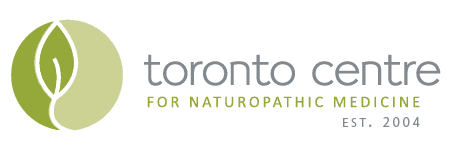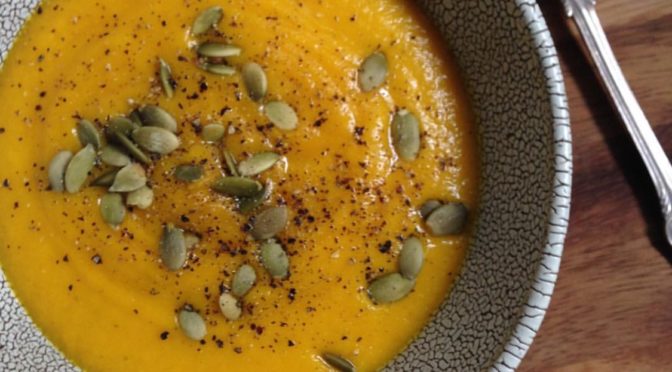Here’s the content of an article we wrote that was published in the fall 2016 “Education Issue” of EcoParent.
They haven’t posted it Online, but this is how the article looks.
– Jonah Lusis, ND
As I write this, in a coffee shop, the next table is engaged in a particularly animated conversation. Until a few minutes ago, I was struggling at focusing on my writing and decided to meditate. See? It works!
Actually, it’s not that simple.
My father (who, it occurs to me, I have only heard raise his voice once in my life) meditates, and for that reason I’ve had an awareness of meditation my entire life. I began using meditation as a clinical tool around 15 years ago after completing a course offered by the Mind-Body Medical Institute (now called the Benson-Henry Institute for Mind Body Medicine), and used it on an “as needed” basis when I was feeling anxious, but only became aware of the potential of this practice when, for no particular reason, I decided to begin a daily meditation practice.
Within a month, I had noticed benefit. After almost a year, I am very aware of improved focus, greater patience, improved mood and emotional resilience and in general, a greater sense of calm, contentedness and optimism. Great for anyone, but specifically, the exact tools children can use to thrive in their studies (and “survive” the sometimes difficult emotional climate of the school environment).
What is Meditation?
Meditation is a term most people are aware of, but few can define.
Historically, meditation has been used as a means to spiritual growth and consciousness-raising: a path to one’s most-evolved self.
In the West, we are more prone to use meditation as a secular pursuit, for the purpose of stress management, and improvement of health and performance. There are many ways to “Western Meditate”, but at their core, all are mental exercises, the goal of which is to improve voluntary control over our thoughts and mental processes, the result of which is greater relaxation, calmness, concentration and the like.
Is There Scientific Support for Meditating?
Thousands of experiments have been published on the effects of meditation, including benefits in reducing discomfort from pain, reducing symptoms of depression, and relevant to school performance:
- A study of 60 adults participating in a three-month meditation program demonstrated that those having meditated were able to better maintain attention on mundane tasks (hopefully your child is inspired to learn and passionate about their studies, but in the event they are not …)
- A study of 50 adults having attention deficit-hyperactivity disorder (ADHD) demonstrated that mindfulness meditation resulted in decreased brain activity associated with ADHD symptoms; corresponding decreases in hyperactivity, impulsivity and inattention; and increased “acting with awareness”
- In a study of 42 elementary school-aged children, eight weeks of meditation resulted in significant improvements in social anxiety and aggressive behavior, and decreased salivary cortisol (the primary hormone we release in response to stress) measurements
And meditation does not only result in changes in a subjective experience:
- MRI scans of persons who meditate compared to those who do not demonstrated that meditators have increased thickening (“brain mass”) in areas of the brain associated with conscience, long-term memory, sustaining attention and visceral awareness (e.g., breathing, heart-rate, muscle tension and other potential physiological cues of being “stressed”)
So, I’m Interested: How Do I Meditate?
There are many ways to meditate, but for the purpose of improved academic performance and stress management, “mindfulness meditation” is the most useful in the context of practicality and convenience.
“Mindfulness” may be defined as “bringing one’s complete attention to the present experience on a moment-to-moment basis”, and can be achieved through a wide range of activities.
In order to meditate, there are only three requirements:
- A distraction-free environment (not necessarily a silent, solitary environment, but a comfortable one in which interruptions will not occur)
- Engagement in diaphragmatic breathing (strictly speaking not essential, but in my opinion, invaluable, particularly if relaxation is a goal)
- The bringing of attention to a single object (e.g., breathing, muscle tension, a phrase or visual image)
Diaphragmatic Breathing
In a seated position, rest your elbows on your knees. Do you feel your belly expanding as you inhale? Do you feel your shoulders “drop” as you exhale? You are now “diaphragmatic breathing”.
Diaphragmatic breathing, sometimes described as “belly breathing”, refers to deep breathing in which the diaphragm, the large muscle at the base of the lungs, and primary muscle in breathing, is used most efficiently.
To practice diaphragmatic breathing: sit comfortably, with a straight back, and place one hand on your abdomen and the other on your chest. As you breath, imagine you are filling a balloon in your belly with air, allowing your abdomen to stretch and expand as you inhale. Monitor chest movement with your second hand: it should be minimal: a feeling of your ribs “widening”.
Exhale fully through pursed lips, allowing your shoulders to drop, and “releasing” muscle tension.
Diaphragmatic breathing feels awkward at first, and does not come naturally: do not be frustrated by this.
Maintaining Attention On a Single Object
Maintaining attention on a single object can take many forms, including practicing yoga or tai chi; repeating a mantra or engaging in prayer; or attending to the direction offered in a “guided meditation” (in which actions are directed by a recording).
My experience with yoga as a meditative pursuit was that it required almost a year of regular practice before I noticed I was attending only on my breathing during classes. Hundred’s of hours of yoga classes are not practical for most children and families.
Silent repetition of a prayer or mantra can be effective for more experienced meditators, but beginners often find it difficult to maintain attention on an internal object.
Other common techniques for centering attention include attending to:
- Breathing, by deep, relaxed diaphragmatic breathing, and attending to how air feels as it follows the path through your mouth and throat into your lungs; and then out again
- Muscle tension, via “progressive muscle relaxation”, in which attention is methodically moved through the body, from head to feet, simply noticing how every part of the body is feeling (and if possible, releasing tension as it is noted)
Because of the time investment required to “master” yoga, and the challenge associated with maintaining attention for beginners, guided meditations are the easiest and most practical place for beginners to proceed.
Guided meditations are readily available on the Internet, but two resources I have used and like are:
Find a guided meditation that resonates with you (e.g., focuses on muscle relaxation if you have muscle tension; is not too “New Age” if you are annoyed by this), and maintain attention on, and follow the directions offered, actively, but gently (i.e., not laser-like focus).
As you meditate, maintain a “non-judgmental” attitude: if the instruction is to bring your attention to your shoulders, and you feel tension there, simply acknowledge the tension you feel. Do not “beat yourself up” over it (“I’m so tense. I need to begin taking care of myself. Why can’t I focus? …”).
When you (inevitably) notice your attention has strayed and you are thinking of other things, acknowledge: “I’m off track”, and return to the meditation.
After your meditation is complete, take a few minutes to gently “bring yourself back” to your environment and return to your day, rather than jumping directly into a board meeting or other stressful situation.
Anything Else Standing Between Me and Enlightenment?
Not really.
Although short meditations provide immediate benefits, to gain cumulative benefits (e.g., be a calmer, more focused person), meditation must be practiced at least 10 minutes daily.
As with any new habit, to successfully integrate meditation into a lifestyle, plan a regular time for it (rather than realizing at day’s end that meditation was missed again).
Many have a “best” time of day to meditate. In my experience, this is often on waking, or for those with children, after children have been dropped to school (usually the most frantic portion of a parent’s day). Meditation at this time allows the remainder of the day to be calm and optimally productive. Others having stressful jobs will find that immediately after work is the best time, in order that stresses can be left at the workplace, and family time can be enjoyed. In my opinion, if school performance is the goal, these are the best times for children as well. For younger children, before bedtime may be ideal, so they can be calm and relax into sleep.
As with any worthwhile pursuit, meditation requires commitment. Do not be frustrated when while meditating you find your mind wandering: this is a normal part of the process, and in fact a sign of success (unawares to you, your “monkey mind” is constantly jumping from concern-to-concern: when meditating you are becoming aware of the jumps). With practice, these will occur less often. Eventually you reach a point at which “time disappears”: you will immerse yourself in meditation, and 10 or 20 minutes will seemingly pass in only a few minutes.
Children in particular will find mediation challenging. I meditate with my six-year-old, for fewer than 10-minutes, and with the knowledge that mediation for her is primarily quiet time, and fostering of an interest in mindfulness (Meditation with my three-year-old is presently limited to my meditating to prevent her driving me insane – serenity now, hopefully not insanity later.)
I’d Like To Start Meditating, If You’ll Stop Talking (Writing)
In my humble opinion, meditation is the single most beneficial life skill we can teach our children. Although challenging, it is simple; the benefits are incredibly far-reaching; and it is truly egalitarian, one of the few completely barrier-free resources in the world, the only requirements being:
- A distraction-free environment
- 10 to 20 minutes-a-day
- Commitment and patience with oneself
Give it a try.
Good luck to you and your children in school and all your pursuits.
References
Walsh R, Shapiro SL. The meeting of meditative disciplines and Western psychology: a mutually enriching dialogue. Am Psychol. 2006 Apr; 61(3):227-39.
MacLean KA, Ferrer E, Aichele SR, et al. Intensive meditation training improves perceptual discrimination and sustained attention. Psychol Sci. 2010; 21(6):829-39.
Schoenberg, Poppy L.A. et al. Effects of mindfulness-based cognitive therapy on neurophysiological correlates of performance monitoring in adult attention-deficit/hyperactivity disorder. Clinical Neurophysiology. 125(7):1407-16.
Yoo YG, Lee DJ, Lee IS, Shin N, Park JY, Yoon MR, Yu B. The effects of mind subtraction meditation on depression, social anxiety, aggression, and salivary cortisol levels of elementary school children in South Korea. J Pediatr Nurs. 2016 Jan 11. pii: S0882-5963(15)00372-3. doi: 10.1016/j.pedn.2015.12.001. [Epub ahead of print]
Lazar SW, Kerr CE, Wasserman RH, et al. Meditation experience is associated with increased cortical thickness. Neuroreport. 2005;16(17):1893-97.
Marlatt GA, Kristeller JL. Mindfulness and meditation. In: Miller WR, editor. Integrating spirituality into treatment: resources for practitioners. Washington, DC: American Psychological Association; 1999. p. 67-84.
Posted: 2016 July 28








